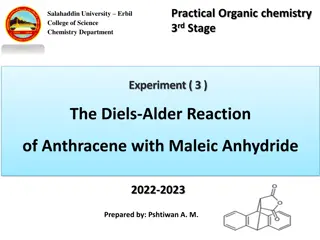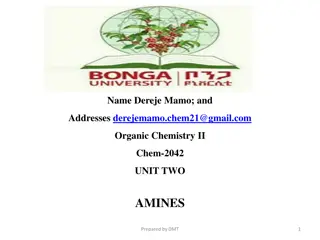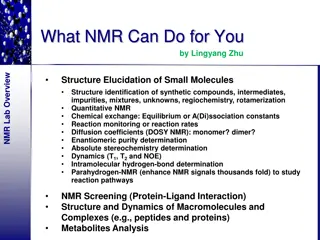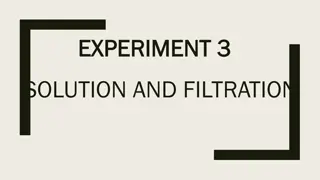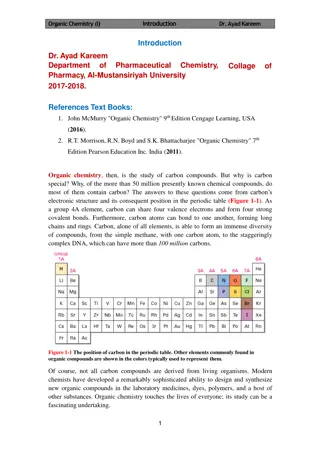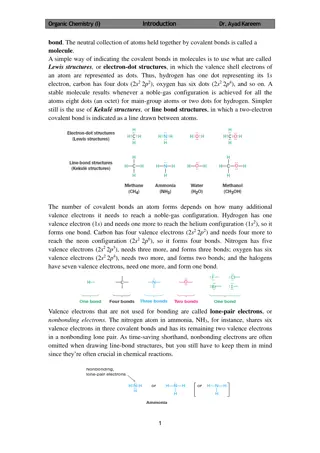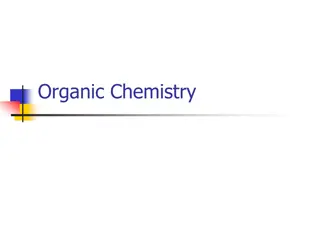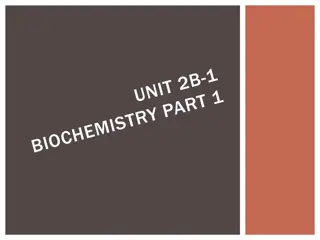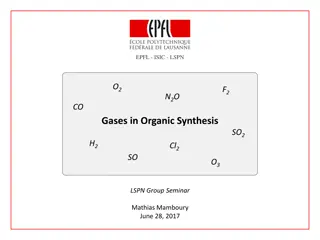
Understanding Stereochemistry in Organic Chemistry
Explore the fundamentals of stereochemistry, including isomerism, chirality, and nomenclature in organic chemistry. Learn about different types of stereoisomers, chiral molecules, and the (R) and (S) nomenclature. Understand the concept of chirality in conformational isomers through examples like cis-1,2-dibromocyclohexane. Dive into the intriguing world of three-dimensional molecular structures and their significance in the field of chemistry.
Download Presentation

Please find below an Image/Link to download the presentation.
The content on the website is provided AS IS for your information and personal use only. It may not be sold, licensed, or shared on other websites without obtaining consent from the author. If you encounter any issues during the download, it is possible that the publisher has removed the file from their server.
You are allowed to download the files provided on this website for personal or commercial use, subject to the condition that they are used lawfully. All files are the property of their respective owners.
The content on the website is provided AS IS for your information and personal use only. It may not be sold, licensed, or shared on other websites without obtaining consent from the author.
E N D
Presentation Transcript
Organic Chemistry-I C. SAKTHIVEL ASSISTANT PROFESSOR DEPARTMENT OF CHEMISTRY PADMAVANI ARTS AND SCIENCE COLLEGE FOR WOMEN, SALEM-11
UNIT-1 Stereochemistry Stereochemistry: The study of the three-dimensional structure of molecules Structural (constitutional) isomers: same molecular formula but different bonding sequence Stereoisomers: same molecular formula, same bonding sequence, different spatial orientation Types of Stereoisomers Two types of stereoisomers: enantiomers two compounds that are nonsuperimposable mirror images of each other diastereomers Two stereoisomers that are not mirror images of each other Geometric isomers (cis-trans isomers) are one type of diastereomer.
Chiral Enantiomers are chiral: Chiral: Not superimposable on its mirror image Many natural and man-made objects are chiral: hands scissors screws (left-handed vs. right-handed threads) Some molecules are chiral: Right hand threads slope up to the right. Asymmetric (chiral) carbon
Chiral vs. Achiral To determine if a compound is chiral: 0 asymmetric carbons: Usually achiral 1 asymmetric carbon: Always chiral 2 asymmetric carbons: Does the compound have an internal plane of symmetry? Yes: achiral No: If mirror image is non-superimposable, then it s chiral. If mirror image is superimposable, then it s achiral. Chiral or achiral H Br Br H CH3 Example: Identify the following molecules as chiral or achiral. Cl CH3 C CH2CH3 CH3 CH3CH2 H Cl Br C C CH3CCH2CH3 Cl CH3CHCH2CH2CH3 H CH2CH3 Br H Br Br Br Br H H H CH3 trans-1,3-dibromocyclohexane ethylcyclohexane CH3 C CH2CH3 Cl Br Br H H
(R) And (S) Nomenclature Stereoisomers are different compounds and often have different properties. Each stereoisomer must have a unique name. The Cahn-Ingold-Prelog convention is used to identify the configuration of each asymmetric carbon atom present in a stereoisomer. (R) and (S) configuration The two enantiomers of alanine are: CH3 Cl CO2H CO2H C H C C H3C NH2 F C H OCH2CH3 CH3 H H2N H H3C Natural alanine (S)-alanine NH2 Example priorities: I > Br > Cl > S > F > O > N > 13C > 12C > 3H > 2H > 1H Unnatural alanine (R)-alanine
Chirality of Conformational Isomers Chirality of Conformational Isomers The two chair conformations of cis-1,2-dibromocyclohexane are nonsuperimposable, but the interconversion is fast and the molecules are in equilibrium. Any sample would be racemic and, as such, optically inactive.
Fischer Mirror Images Fisher projections are easy to draw and make it easier to find enantiomers and internal mirror planes when the molecule has two or more chiral centers. CH3 H Cl Cl H CH3 Chapter 5 7
Fischer (R) and (S) Lowest priority (usually H) comes forward, so assignment rules are backward! Clockwise 1-2-3 is (S) and counterclockwise 1-2-3 is (R). Example: (S) CH3 H Cl Cl H CH3 (S) Chapter 5 8
Diastereomers: Cis-trans Isomerism on Rings Cis-trans isomers are not mirror images, so these are diastereomers. Chapter 5 9


